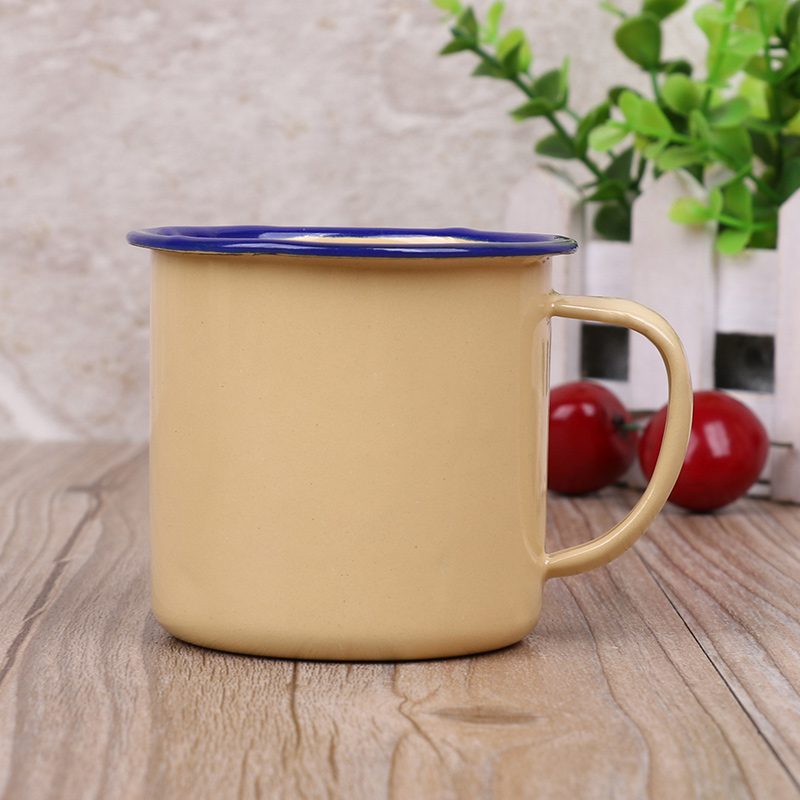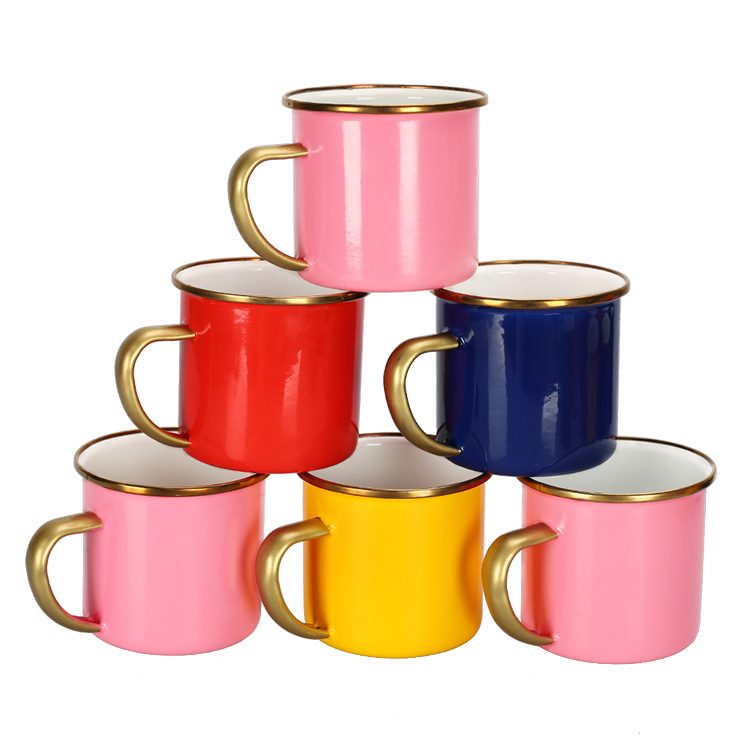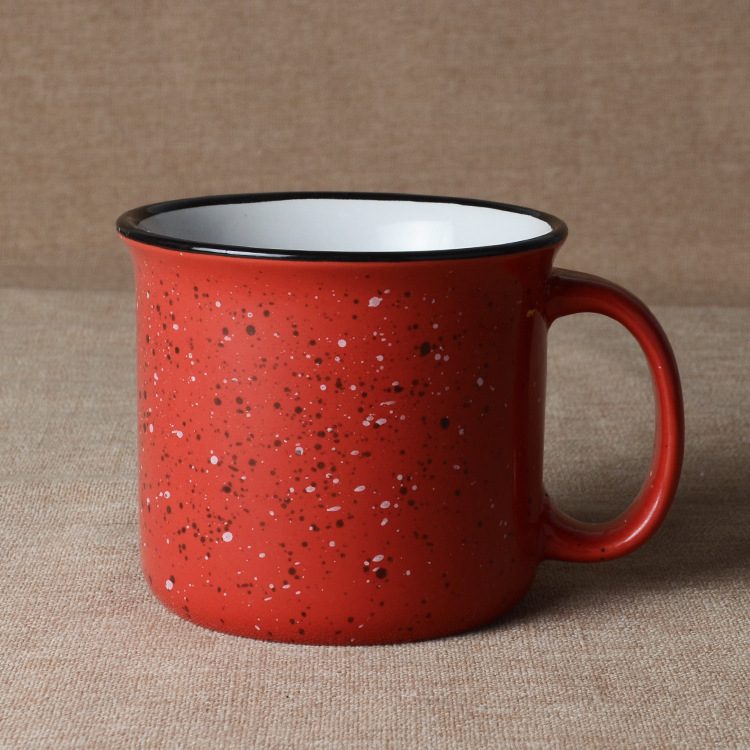What is Enamel mug
The surface of the metal cup is coated with a layer of ceramic glaze and fired at a high temperature. The enamel coating on the metal surface prevents the metal from rusting, so that the metal does not form an oxide layer on the surface when heated and resists various liquids. Erosion.
Enamel Mug Production Step
1. Billet: Take a piece of iron, punch it into a barrel shape by machine, trim the welding rod, and make the blank;
2. Glaze slurry: buy some enamel glaze (including bottom glaze, surface glaze), add water, clay according to the formula, after preparation, refining, to prepare glaze slurry;
3. Glazing: evenly spread the bottom glaze inside and outside the iron cup, and then dry;
4. The bottom glaze: get a stove, can burn more than 800, burn in the stove for two or three minutes
5. Face glaze: The cup with the bottom glaze is glazed on the top and put in the stove for two minutes.
Precautions
1. Please wash thoroughly with detergent in warm water before use.
2. Enamel is a fragile item, do not touch it when you use it, or it will lose porcelain.
3. The lead content of the enamel cup should meet the national daily enamel standard before it can be used with confidence.
About enamel mug
The enamel mug is hand-made and the process is complicated. There is no innocent saying. It is inevitable that there will be uneven glazing, dents or scratches, and black spots caused by falling ash.
1. Distinguish between porcelain and black spots
Every production process of enamel requires manual operation, which determines the imperfect characteristics of enamel. Customers who are not familiar with enamel will be entangled in small black spots inside or outside. In fact, as long as they are enamel products, there will inevitably be black spots (especially white glaze and the inside of the food utensils is a white glaze, eliminating colorants). The dust in the environment during the baking process will fall on the glaze to form black spots, which will not affect the use. Especially in the case of white glaze, the enamel products are unavoidable.
2. Folding type pit
There are several small pits in the handle of the inside of the cuffed side, the measuring cup or the baking pan. It is the mark of the hook or bracket that is hoisted or racked up during glazing, drying or firing. It can’t float in the air, this is a process limitation.







